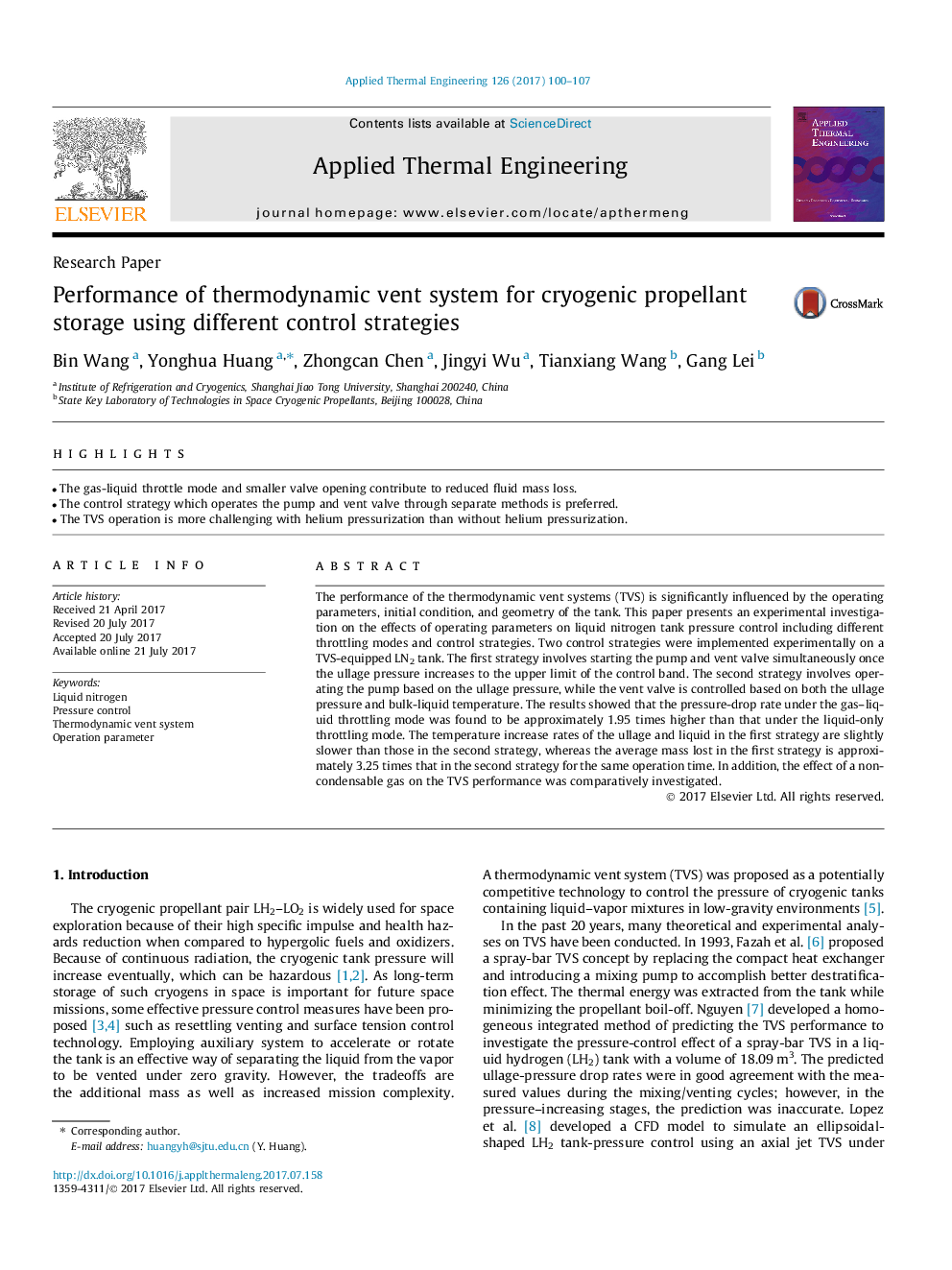| Article ID | Journal | Published Year | Pages | File Type |
|---|---|---|---|---|
| 4990419 | Applied Thermal Engineering | 2017 | 8 Pages |
Abstract
The performance of the thermodynamic vent systems (TVS) is significantly influenced by the operating parameters, initial condition, and geometry of the tank. This paper presents an experimental investigation on the effects of operating parameters on liquid nitrogen tank pressure control including different throttling modes and control strategies. Two control strategies were implemented experimentally on a TVS-equipped LN2 tank. The first strategy involves starting the pump and vent valve simultaneously once the ullage pressure increases to the upper limit of the control band. The second strategy involves operating the pump based on the ullage pressure, while the vent valve is controlled based on both the ullage pressure and bulk-liquid temperature. The results showed that the pressure-drop rate under the gas-liquid throttling mode was found to be approximately 1.95 times higher than that under the liquid-only throttling mode. The temperature increase rates of the ullage and liquid in the first strategy are slightly slower than those in the second strategy, whereas the average mass lost in the first strategy is approximately 3.25 times that in the second strategy for the same operation time. In addition, the effect of a noncondensable gas on the TVS performance was comparatively investigated.
Related Topics
Physical Sciences and Engineering
Chemical Engineering
Fluid Flow and Transfer Processes
Authors
Bin Wang, Yonghua Huang, Zhongcan Chen, Jingyi Wu, Tianxiang Wang, Gang Lei,
